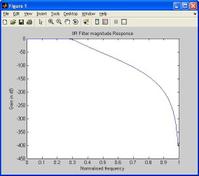
Implementing a Low-Pass FIR Filter in Python
Learn how to implement a low-pass FIR filter in Python using the scipy.signal library, complete with code and frequency response plots.
Showing 20 posts (Page 5 of 10)
Advertisement

Learn how to implement a low-pass FIR filter in Python using the scipy.signal library, complete with code and frequency response plots.

Calculate intermediate frequency (IF) with our calculator and learn about its formula, definition, and benefits in RF transceivers and heterodyne architectures.

Explore the advantages and disadvantages of using Intermediate Frequency (IF) in RF systems. Learn about IF's role in cost, filtering, and receiver design.

Analyze IQ data, transmit power, and power spectrum using LabVIEW VIs. This article provides insights into the LabVIEW code and its application in wireless communication.

Explore IQ imbalance (gain, phase, DC offset), its impact on constellation diagrams, and compensation methods in communication systems.

Explore the differences between Layered Division Multiplexing (LDM), Time Division Multiplexing (TDM), and Frequency Division Multiplexing (FDM), including advantages and applications.

Explore MATLAB source code for implementing a Low Pass FIR Filter, including filter design using firrcos and the FDA tool.

This article presents a Verilog implementation of a low-pass FIR filter using coefficients generated from MATLAB and converted to Q-15 format.

MATLAB source code for a Butterworth IIR low pass digital filter. Includes filter design, implementation, and visualization of magnitude/phase response.

Explore the differences between low-pass and band-pass sampling techniques, including Nyquist criteria, anti-aliasing filters, and frequency translation.

Explore MATLAB source code for interpolation (up-sampling) techniques, including exponential vector up-sampling and using built-in functions like `resample` and `interp1`.

MATLAB code demonstrating local oscillator phase noise and its impact on constellation diagrams, adapted from 'Digital Front-End Compensation'.

Explore the pros and cons of MIMO (Multiple Input Multiple Output) technology, including higher data rates, reduced BER, hardware complexity, and power consumption.
Explore Mini Circuits' new directional couplers, covering 5 KHz to 18 GHz with 6 dB to 40 dB coupling ratios. Learn about applications and selection criteria for RF testing and measurement.
Explore the differences between Minimum Detectable Signal (MDS) and Spurious Free Dynamic Range (SFDR) in RF receivers. Learn how they measure sensitivity and dynamic range.

Explore the distinctions between modulators and multipliers, focusing on their function, linearity, and applications in signal processing. Includes equations and examples.

Explore the benefits and drawbacks of MSK and GMSK modulation techniques, including spectral efficiency, SNR, and interference considerations.

A comprehensive guide to MSK modulation using MATLAB, including source code, explanations, and expected input/output. Minimum Shift Keying implementation detailed.

Explore the pros and cons of MTI radar, including benefits like clutter rejection and drawbacks such as blind speeds. Get a concise overview of MTI technology.

Explore multilateration, a positioning technique using Time Difference of Arrival (TDOA) to locate objects with high accuracy. Learn its applications, advantages, and disadvantages.
Advertisement